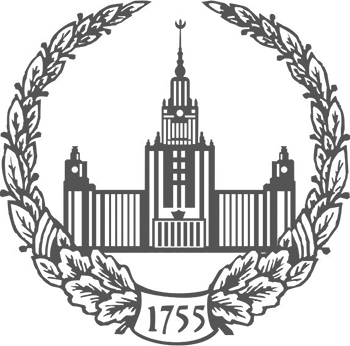
-
Tver’ Governor P.D. Akhlestyshev and Minister of the Interior I.L. Goremykin: Confrontation over the Zemstvo in 1896–1897Moscow University Bulletin. Series 8: History 2019. N 6. p.60-75read more1187
-
Conflict of the Tver’ Governor P.D. Akhlestyshev with the provincial zemstvo lasted throughout the entire period of his tenure in this post in the 1890s, however, after I.L. Goremykin was appointed Minister of the Interior in the fall of 1895, it moved into a new phase. The Minister actually sided with the opposition-minded zemstvo, and Akhlestyshev was forced to resign in the late 1897. Goremykin’s position in this matter was determined by two reasons: first, by the legalism inherent in the mode of his administration (thus he refused to regard the opposition of the zemstvo to the Governor as a challenge to the entire autocratic regime), and second, by intrigues inside the Ministry of the Interior in order to discredit Akhlestyshev. For almost two years, from the late 1895, the Governor tried to convince Goremykin of the legitimacy of his complaints against the zemstvo, however, judging by the quite negative reaction to Akhlestyshev’s reports, it was the Governer himself whom the Ministry blamed for the unhealthy socio-political conditions in the Tver’ guberniya. Correspondence of the Governor and Minister in 1896–1897 allows to follow the escalation of tension between them. What remained beyond the scope of this official documentation can be analyzed due to correspondence of the Governor with his confident Count S.D. Sheremetev, with whom Akhlestyshev shared the details of his relationship with the local zemstvo and the Ministry. This story shows that the political process in the Russian Empire in the late 19th century was much more complex than the confrontation between conservatives and liberals. The idea of building constructive relations with the zemstvo, despite the often provocative behavior of the latter, was evidently spreading among the representatives of the highest bureaucracy, as can be clearly seen in the case of the Tver’ guberniya. Such a link between legalist bureaucrats and liberals set a trend that doomed the utmost conservatives to marginalization.
Keywords: zemstvo; Tver’ guberniya; Ministry of the Interior; P.D. Akhlestyshev; I.L. Goremykin; Count S.D. Sheremetev
-
-
“Undoubtedly , Disaster is Fast Approaching ”: official information and rumors about the state of health of Alexander III in the fall of 1894Moscow University Bulletin. Series 8: History 2020. N 2. p.35-55read more1829
-
Alexander III was not the frst Russian Emperor whose death was accompanied by a special “regime of secrecy”. An overview and analysis of the information background of those events can contribute much to understanding how the supreme power and mechanisms of its “transit” functioned in that period. In the beginning of the fall of 1894, Emperor Alexander III’s health began to deteriorate sharply. In the end of September, the imperial family moved to their Crimean residence at Livadia, where Alexander died a month later. Troughout all this time, air was flled with rumors of the tsar’s disease, its possible course and outcome. Meanwhile, ofcial information about his illness was poorly disseminated. Bulletins on this matter started to be published only two weeks before his death; moreover, they were elusive and it was rather difcult to understand what was really going on with Alexander. Some readers looked in them for hidden hints, mostly farfetched, and reconstructed their own “clinical picture” on this basis. In addition, the bulletins appeared in the ofcial Pravitel’stvennyy Vestnik with a one-day delay. They were more quickly posted up in public places, and everybody had to come there to fnd out the latest news about the tsar’s health. But even there, the bulletins were not updated at a certain time interval, but as they arrived from Livadia. This irregularity, even in the imperial capital, exacerbated the uncertainty and anxiety of the society. Te clash of opposing opinions in the immediate environment of the tsar regarding how and how much information about his illness should be broadcast outside the Crimean residence provided fertile ground for all sorts of speculations and assumptions. Not only the general public, but also representatives of the highest bureaucracy, as well as those who, due to their position, usually possessed exclusive information, felt uncomfortable in the information vacuum. Tis “unhealthy” atmosphere contributed to the appearance of implausible rumors about the relations within the imperial family and scenarios of succession. All these versions were subsequently used to discredit the autocracy.
Keywords: Alexander III; Empress Maria Feodorovna; Heir Tsesarevich Nikolai Alexandrovich; Minister of Imperial Court I.I. Vorontsov-Dashkov; Chief Prosecutor of the Holy Synod K.P. Pobedonostsev; Count S.D. Sheremetev; N.V. Sultanov
-
-
Conflict and Media: Interaction and Mutual Infl uence in the Context of Preserving Historical MemoryMoscow University Bulletin. Series 8: History 2024. N 3. p.156-170read more507
-
The article analyzes new interdisciplinary approaches to understanding the relationship and mutual influence of media and conflict in the context of preserving historical memory in the modern media environment. The article examines theoretical, historical, socio-cultural and communicative aspects of the interaction and mutual influence of media and conflict in the context of the current transformation of media space and society. The authors draw conclusions about the role of media in preserving cultural and historical heritage and historical memory in the context of digitalization. They analyze the prospects for further research into the risks, challenges and conflicts arising from the volatility and uncertainty of the contemporary media environment and outline possible outcomes of work in this area. The article identifies significant changes in the way conflict is reflected in different media, and the impact of these changes on individuals and communities affected by them. It identifies the need to consider the new purposes of media texts, using the traditional functions of journalism and involving a representative segment of media consumers in the process of learning about conflict. The authors emphasize the need to analyze the multi-subject digital media environment in order to correlate two types of conflict situations (those generated by the media and those arising for other reasons), to design technologies and ways of managing the processes of media representation of conflict, and to create the necessary tools for this purpose. It is reasonable to predict that interdisciplinary analyses of the mutual influence of the phenomena of conflict and the media will broaden the current understanding of what conflict is in the situation of a new media reality that emerges as a result of the interaction of different media and their target audiences. As a possible prospect for research in this direction, the authors point out the search for ways to improve the effectiveness of media communications in order to reduce the risks of conflict and the formation of measures that are designed to harmonize the techniques of public communication. They draw attention to the importance of such developments to fill the gap in the theoretical understanding of the phenomenon of media representation in the context of current problems of contemporary Russian society, including the risks of conflicts of different nature.
Keywords: media, conflict, historical memory, mediatization, digitalization, cul tural and historical heritage
-


